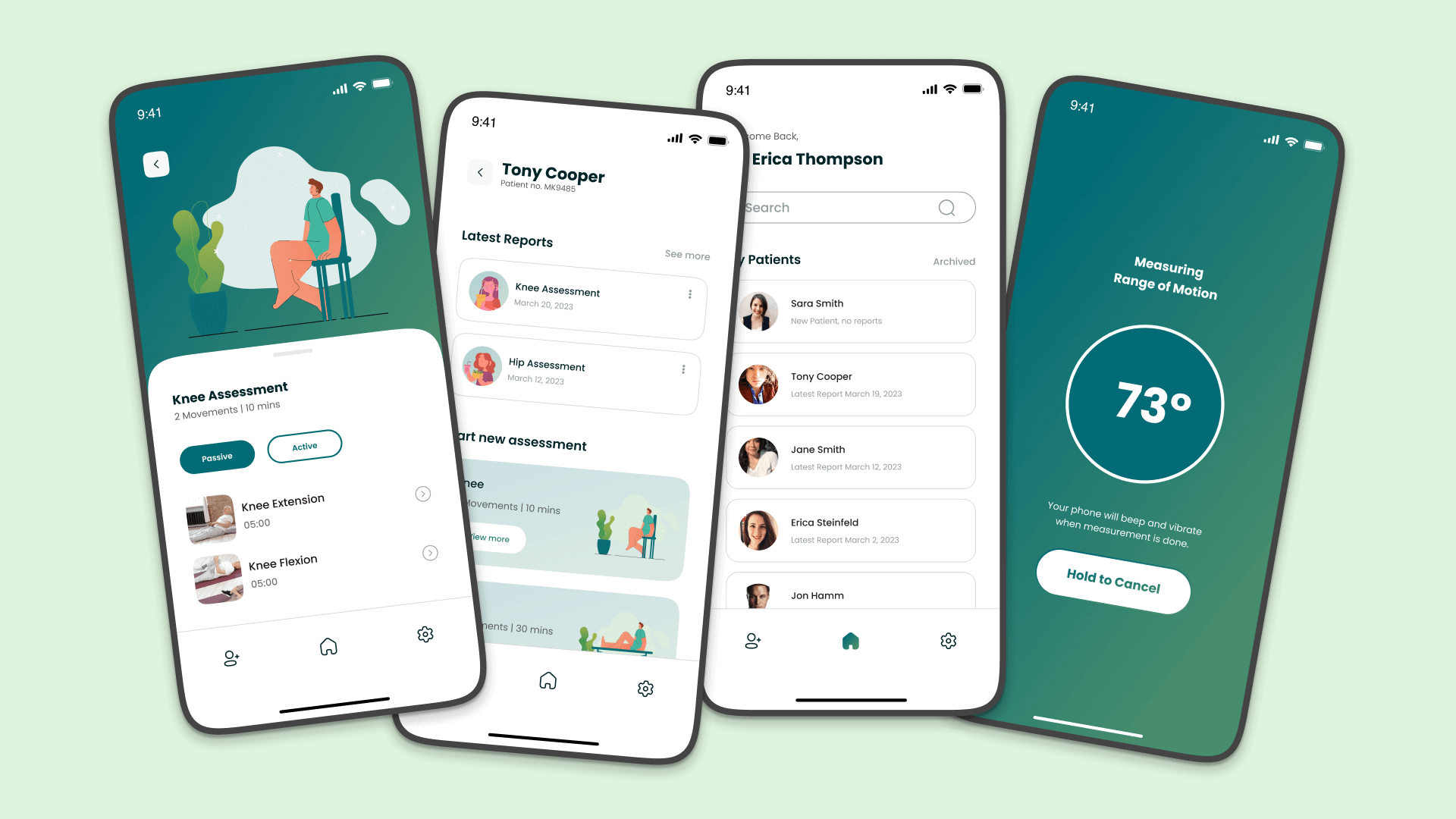
Physiotherapists use goniometers to measure patients’ joint range of motion (R.O.M.) — a manual, time-consuming, error-prone process.
So, we designed Physmate—a smart goniometer app that utilizes smartphone sensors for accurate measurements. It simplifies R.O.M. measurements, allowing therapists to focus on patient care.
Team: 4
Duration: 4 weeks
My role: Interviews, UX Design, Prototyping & Stakeholder Presentation
Try out the Interactive Prototype I made. 👉🏼
“It feels like we spend more time doing paperwork than actually tending to patients.”, said a physiotherapist we interviewed.
Problem Statement

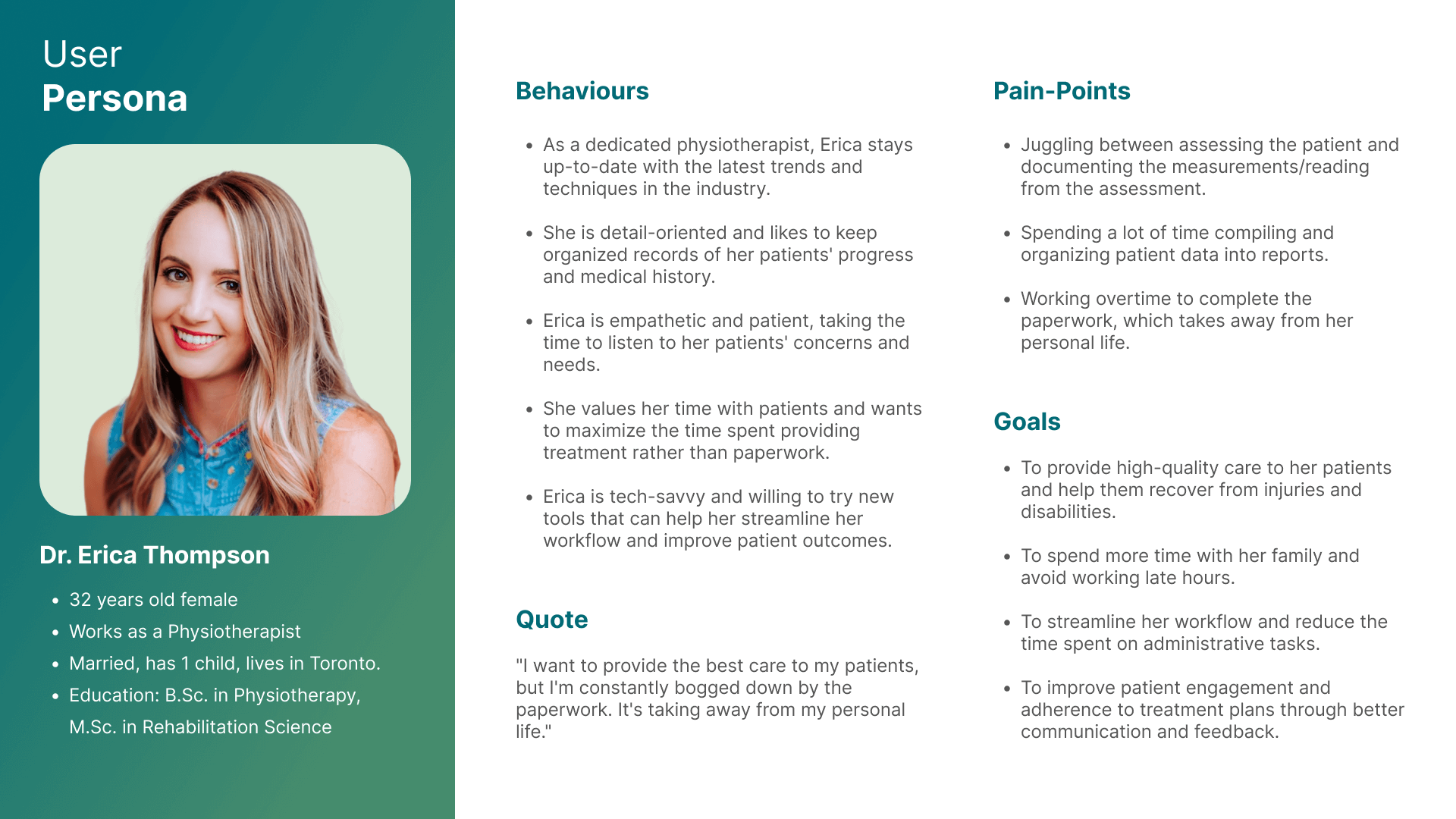
Pain points for physiotherapists:
Other Important Insights:
We identified two products that were similar enough to our app to be considered competitors:
What sets Physmate apart: The competitors do not specifically target physiotherapists as their primary users. Physmate, on the other hand, offers a solution specifically designed for use by physiotherapists in clinics. This gives us our niche in the market. We believe that this market is underserved and we can provide great value to professionals in the field.
To generate ideas for the Physmate app, we conducted brainstorming exercises like Crazy 6s and 3-panel sketching.
During Crazy 6s, we generated multiple ideas, critiqued each other’s proposals, and selected the most promising ones to proceed with.
We then used 3-panel sketching to further develop and refine our ideas.
Finally, we used dot voting to converge on the most promising idea to take forward for the design process.
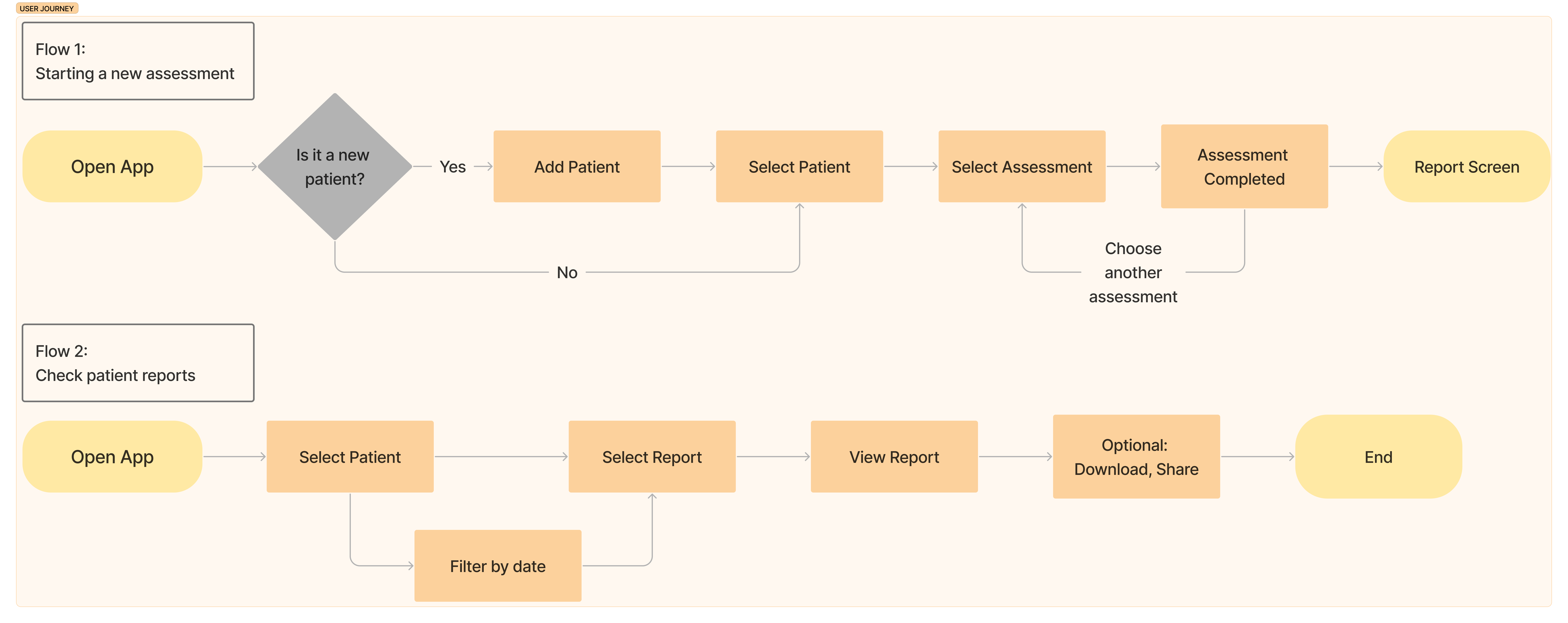

Participants: 2 practising physiotherapists
Prototype used: Medium Fidelity
The main focus of the app is to provide physiotherapists with tools to manage their patients’ recovery journey. The mockups show how the app allows physiotherapists to create and manage patient profiles, conduct assessments, track progress, and assign exercises.
Participants: 3
Prototype used: High Fidelity

Workbench-style virtual lab environment for electrical circuits training.
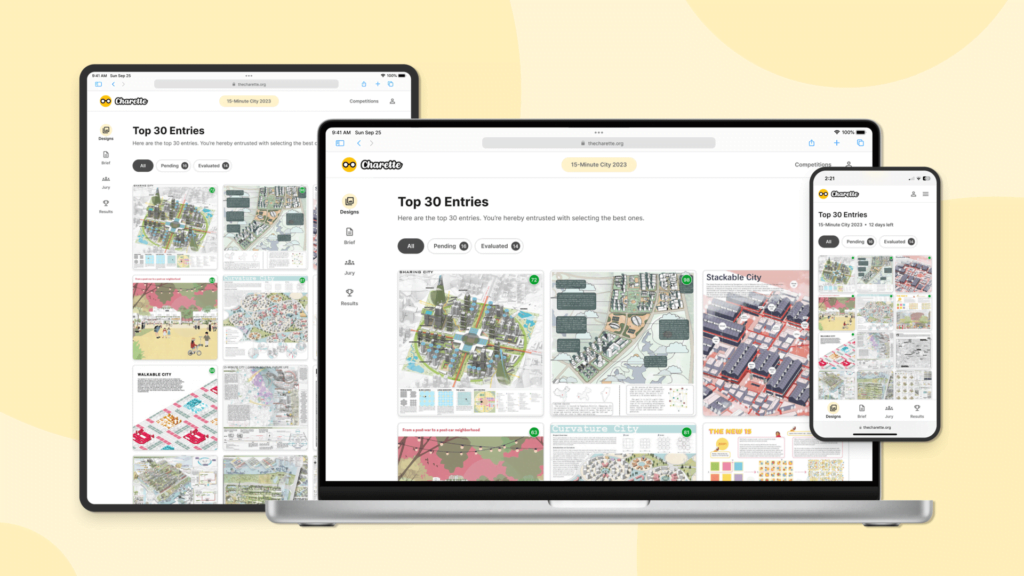
Architectural Design Challenges: Think of it as hackathons for architects.
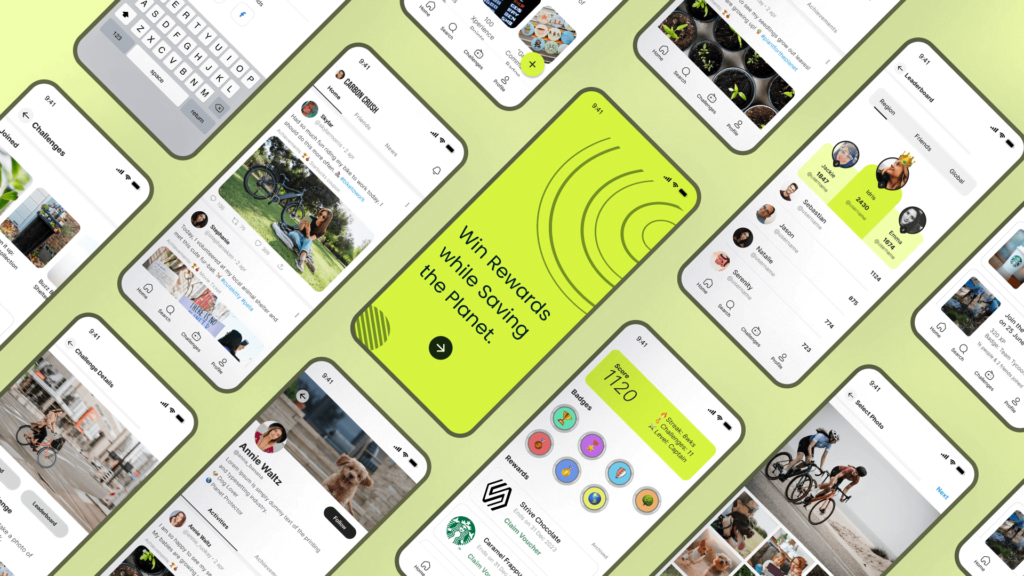
Social app encouraging climate action with fun challenges and incentives.